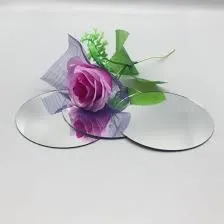

The Benefits of Energy-Efficient Low-E Glass
In recent years, the construction and renovation industries have witnessed a significant shift towards sustainability and energy efficiency. One of the most significant advancements in this area is the development of energy-efficient low-emissivity (Low-E) glass. This innovative material is becoming increasingly popular among architects, builders, and homeowners alike. In this article, we will explore what Low-E glass is, how it works, and the many benefits it offers in terms of energy efficiency, comfort, and environmental impact.
What is Low-E Glass?
Low-E glass is a type of glass that has been treated with a microscopically thin coating of metallic oxides. This coating is designed to reflect heat while allowing natural light to enter a building. There are two primary types of Low-E glass hard coat and soft coat. Hard coat Low-E glass is manufactured through a process that creates a robust surface, while soft coat Low-E glass involves a more delicate procedure that yields a higher level of performance.
How Does Low-E Glass Work?
The primary function of Low-E glass is to control the heat transfer between the inside and outside of a building. It works by reflecting infrared light while permitting visible light to pass through. This means that during the summer months, Low-E glass helps to keep indoor spaces cooler by reflecting the sun's heat. Conversely, in the winter months, it retains indoor heat by reflecting it back into the building. This efficient thermal management significantly reduces the reliance on heating and cooling systems, leading to lower energy consumption.
Benefits of Energy-Efficient Low-E Glass
1. Energy Savings One of the most compelling reasons to consider Low-E glass is the energy savings it can provide. Buildings equipped with Low-E windows require less heating and cooling, which translates into lower energy bills. According to the U.S. Department of Energy, using Low-E glass can result in energy savings of up to 30-50% compared to standard glass.

2. Enhanced Comfort Low-E glass contributes to enhanced indoor comfort. By minimizing temperature fluctuations, it helps maintain a consistent and pleasant indoor environment. This is particularly beneficial in climates with extreme temperatures, where traditional windows may lead to hot and cold spots within a home or building.
3. UV Protection Low-E glass also offers protection from harmful ultraviolet (UV) rays that can cause fading to furniture, carpets, and artwork. By filtering out a significant percentage of UV radiation, Low-E windows can help preserve the interior aesthetics of a building and prolong the life of its furnishings.
4. Environmental Impact Opting for energy-efficient Low-E glass is an eco-friendly choice. By reducing energy consumption, buildings can decrease their carbon footprint, contributing to a more sustainable future. With the increasing urgency to address climate change, using materials that promote energy efficiency is more critical than ever.
5. Noise Reduction In addition to its thermal performance, Low-E glass can also aid in noise reduction. The thicker structure often used in Low-E glazing can help dampen exterior sounds, creating a quieter indoor environment. This characteristic is particularly valuable in urban areas or near busy roads.
6. Aesthetic Appeal Low-E glass is available in various styles and designs, allowing homeowners and builders to enjoy both aesthetics and performance. With options for various frame materials and finishes, Low-E glass can seamlessly integrate into any architectural design.
Conclusion
Energy-efficient Low-E glass is a cutting-edge solution to the challenges of energy consumption, comfort, and environmental sustainability in modern construction. Its ability to enhance the quality of indoor spaces while significantly cutting energy costs makes it a smart choice for new building projects and renovations alike. As we continue to strive for a greener future, incorporating Low-E glass can play a vital role in achieving energy efficiency and enhancing the overall comfort of our living and working spaces. Whether you're an architect, builder, or homeowner, the benefits of Low-E glass are clear—it's an investment in a brighter, more sustainable future.